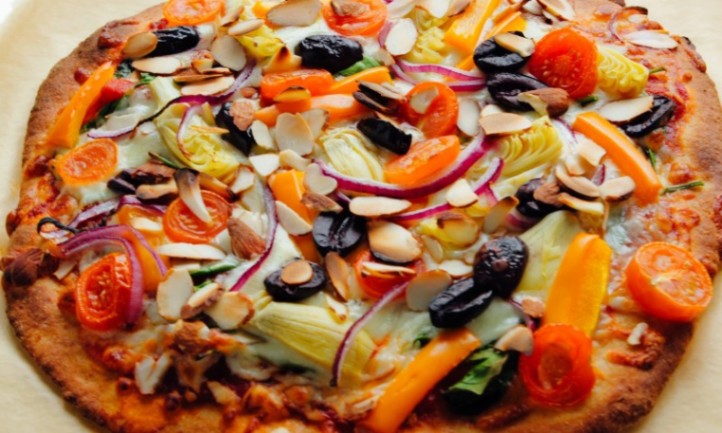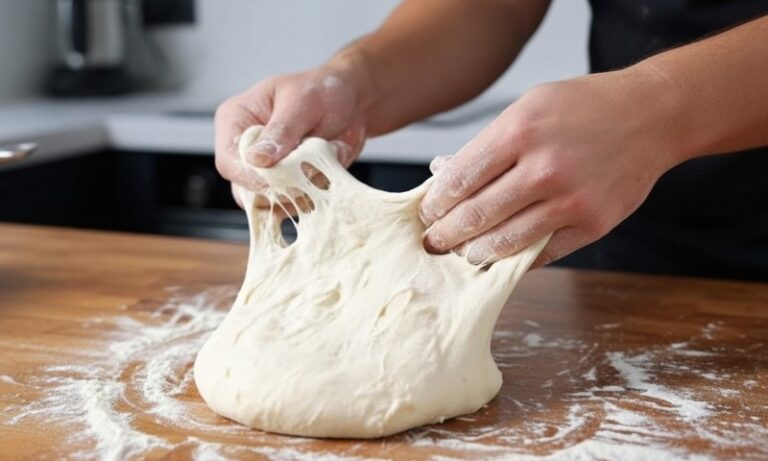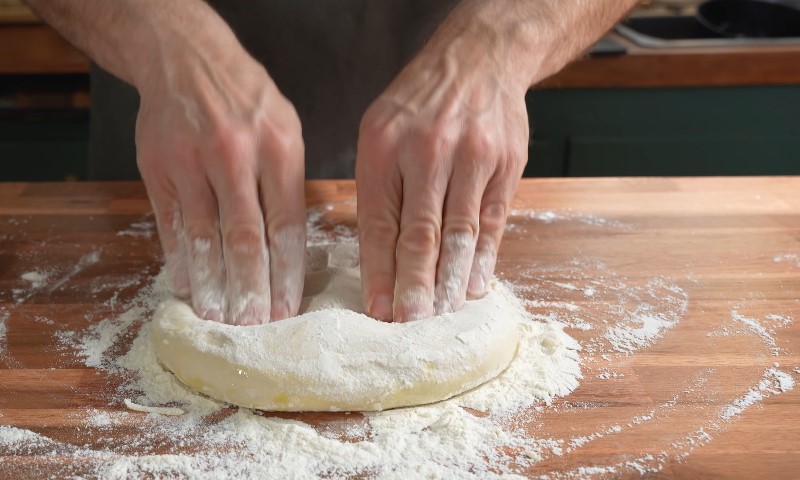You forgot to start the dough, guests arrive soon, and takeout feels like surrender. The clock is running, but you can still make pizza that smells like a neighborhood pizzeria and tastes like it had all day to rise.
With the right yeast, temperature control, and a few smart tricks from professional bakers, a last-minute pizza can rival one that took hours.
Let’s go through how to shorten fermentation time without ruining flavor or structure, based on the science that pros rely on every day.
Table of Contents
ToggleKey Takeaways
- Keep dough between 75–78°F through mixing and proofing.
- Use instant yeast for fast, clean fermentation.
- Choose a warm, humid proofing setup like the oven-light or Instant Pot method.
- Add small amounts of sugar or malt for color and flavor, and mix in oil after gluten starts forming.
- Maintain food safety and bake thoroughly for both taste and safety.
The Three Levers for Speed
When you’re short on time, three factors determine how fast your pizza dough rises: temperature, yeast choice, and ingredient balance.
1. Temperature Control
Temperature is everything when you’re racing the clock. Aim to mix your dough to about 75°F and keep it there throughout fermentation. A cold kitchen can easily slow things down by half.
How to create a stable proofing zone:
- Oven light method: Place the dough in the oven with just the light on. The bulb generates gentle heat and keeps the environment steady.
- Steaming water trick: A bowl of steaming water in the oven adds moisture and warmth, giving yeast a little sauna that speeds up activity.
- Cast-iron boost: Heat a cast-iron skillet on the stove, then move it into the oven cavity (oven off). It radiates stable warmth that helps dough proof evenly.
- Instant Pot hack: The “low yogurt” mode holds around 90°F, which can cut proof time by nearly half. Just check every 10 minutes to prevent overproofing.
Be careful not to exceed 95°F, since yeast slows down past that point and dies near 122°F. A simple thermometer will save you a lot of guesswork.
2. Yeast Selection and Handling
Instant yeast is your best ally when you need fast fermentation. It’s designed to activate quickly and tolerates warmer dough without losing strength.
Lesaffre’s Saf-Instant Red is widely used in commercial kitchens for quick schedules because it thrives in lean doughs (little sugar or fat).
Water temperature guidelines:
- For active dry yeast , activate it between 105–110°F before mixing.
- For instant yeast , mix it directly with flour and use water between 75–80°F. It hydrates as you mix, so there’s no need to bloom it separately.
3. Formula Tweaks That Help Speed and Browning
A few ingredient adjustments can make your dough rise quicker and bake with color, even without a long fermentation.
- Sugar: A small addition (around 1.5% of flour weight) gives yeast extra food and helps with browning in short bakes.
- Diastatic malt powder: Converts starches into simple sugars, helping the crust caramelize. Use sparingly, about 0.2% of flour weight.
- Oil: Add olive oil after gluten starts forming. It improves tenderness and makes the dough easier to handle.
- Salt: Don’t skip it. It strengthens gluten and keeps fermentation steady, preventing your dough from turning sticky or collapsing.
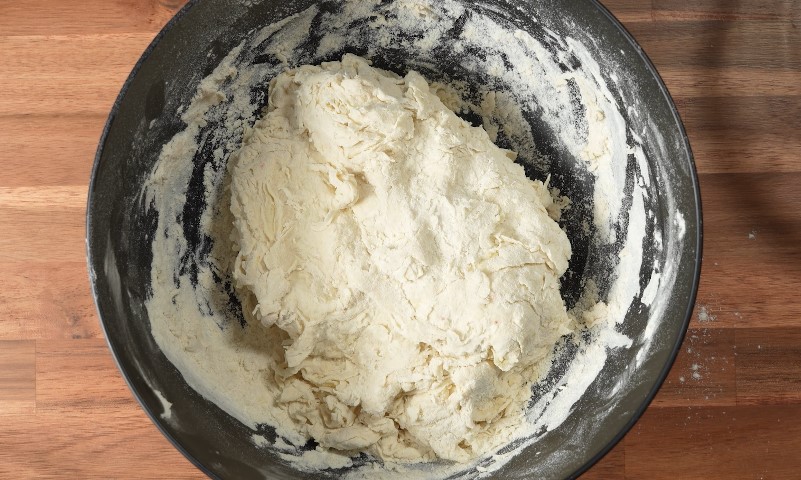
Quick-Rise Pizza Dough
Equipment
- Digital kitchen scale – For precise ingredient measurement
- Instant-read thermometer – To monitor dough temperature
- Baking steel or stone – Essential for crisp bottom and fast bake
- Warm proofing setup – Choose one:Oven with light onBowl over warm waterInstant Pot on “Yogurt” setting
- Mixing bowl
- Bench scraper – Helpful for dividing and handling dough
- Pizza peel or baking sheet – For transferring to oven
- Oven broiler (optional) – To enhance top browning
Ingredients
- Bread flour
- Water (75–80°F)
- Fine sea salt
- Instant yeast
- Olive oil
- Sugar (optional)
- Diastatic malt (optional)
Instructions
- Mix and HydrateIn a large bowl, combine flour, yeast, salt, sugar, and diastatic malt (if using).Add water (75–80°F). Mix just until there are no dry spots.Let the dough rest for 10 minutes (autolyse stage).
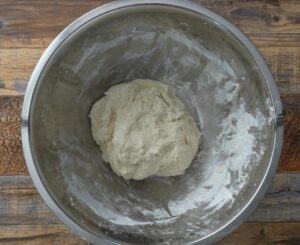
- Knead and Develop GlutenKnead by hand or with a mixer for 2–3 minutes.Add olive oil, and knead again until smooth-ish and cohesive.Use your thermometer to check dough temp—it should be at least 73°F. If cooler, rest it in your warm proofing zone until it hits 75°F.
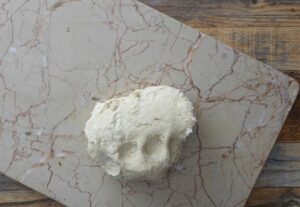
- Bulk ProofPlace the dough in a lightly oiled bowl, cover, and proof in your warm zone.Check after 25 minutes—it should feel lighter.Dough should nearly double within 45–60 minutes, depending on ambient temperature.
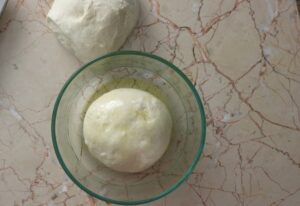
- Final ProofProof dough balls for another 20–30 minutes in a warm spot.When ready, the surface will look puffy and spring back slowly when poked.
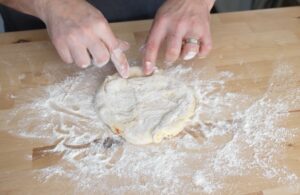
- Preheat and ShapePreheat oven with steel or stone to 500–550°F. Let it heat for at least 45 minutes.Gently stretch dough, pressing from the center outward, leaving a thicker rim.Transfer to a floured peel or baking sheet.
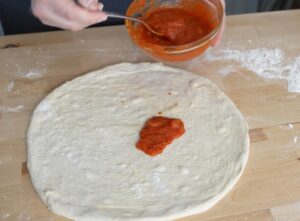
- Top and BakeAdd light toppings—don’t overload.Bake for 6–8 minutes, or until the crust is golden and puffed.If needed, finish under the broiler for 30–60 seconds for a blistered top.

Video
Notes
Cooking Tips
- Temperature is everything. Keep dough between 75–80°F throughout proofing for optimal speed and texture.
- Don’t over-knead. Slightly underdeveloped dough proofs faster and results in a more tender crumb.
- Steam = softness. To create a makeshift steam oven, place a pan of hot water on a lower rack during baking (optional).
- Don’t overtop. Wet or heavy toppings will prevent the crust from crisping properly.
- Chill option: If you want more flavor, let the dough cold-ferment in the fridge overnight and use within 24 hours.
Proofing Methods That Save Time
| Method | How It Speeds Up | Typical Setup | Watch-Outs |
| Oven light, door closed | Maintains steady 80°F zone | Covered dough on middle rack, light on | Use thermometer, never turn oven on |
| Steaming water bowl | Adds humidity and warmth | Bowl of hot water under dough in oven | Refresh water every 45 minutes |
| Heated cast-iron | Radiates steady heat | Warm skillet placed in oven cavity | Handle carefully, check temperature |
| Instant Pot (low yogurt) | Holds near 90°F | Dough in pot, lid on loosely | Check every 10 minutes to avoid overproofing |
Ingredient Choices That Support a Fast Rise
- Instant yeast: Mixes easily and thrives in short fermentations. Saf-Instant Red is a go-to among professionals.
- Sugar and malt: Provide fermentable sugars for quick lift and golden crust.
- Oil: Keeps crumb soft and helps shape the dough without tearing.
- Salt: Balances gluten strength so your dough doesn’t blow out.
The Fast-Rise Tradeoff
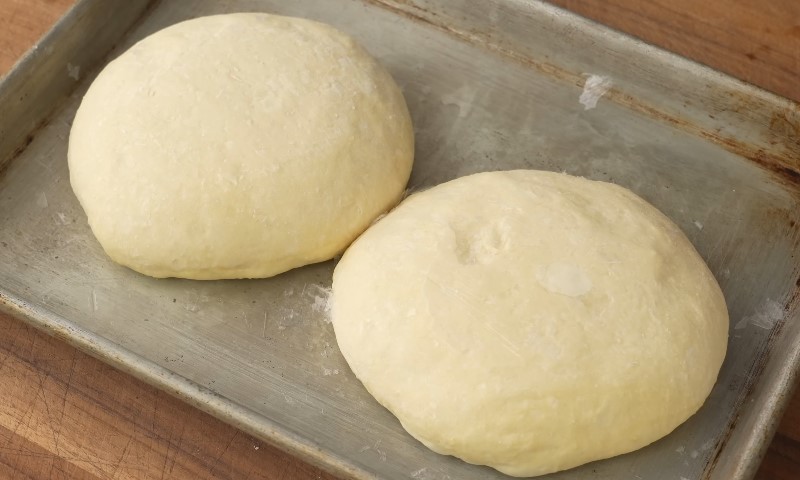
Slow fermentation is the ultimate route for flavor complexity, but fast dough doesn’t mean bland. When you control heat and yeast activity carefully, you can still get crisp edges and subtle sweetness in under two hours.
Extended cold fermentation (2–5 days) encourages enzyme activity that produces nutty, tangy notes, as proven by The Food Lab and multiple artisan bakeries. When time allows, that’s worth it.
But for spontaneous pizza nights, a warm, steady proofing environment and instant yeast give you impressive results with minimal waiting.
Safety First When Speeding Things Up
- Follow the two-hour rule: According to the USDA, any perishable dough kept between 40°F and 140°F for over two hours risks bacterial growth.
- Keep ingredients cold until mixing, and refrigerate the dough if you pause mid-process.
- Bake thoroughly: Research shows baking pizza to an internal temperature of at least 209°F for 12 minutes achieves a 5-log reduction in harmful bacteria like E. coli.
Troubleshooting a Hurried Dough
| Problem | Likely Cause | Fix |
| Dough feels weak or sticky | Too warm, too much sugar or oil early | Chill for 10 minutes, then continue; add oil later next time |
| Pale crust | Insufficient preheat or sugar | Extend preheat, add a bit of sugar or malt |
| Tight, bready texture | Over-kneading or cool dough | Shorten knead, maintain mid-70s temp |
| Overproofed dough | Proofed too long in warm setup | Degas, reball, rest cool 20 minutes |
A One-Hour Bake Plan You Can Follow
| Time | Step | Details |
| T-60 | Preheat oven & heat water | Steel at max temp, water to 75–80°F |
| T-58 | Mix & knead | Add oil last, keep dough near 75°F |
| T-50 | Set up proof zone | Oven light or cast-iron method |
| T-48 to T-18 | Bulk proof & divide | Proof 30 min, rest 10 min, final 20 min |
| T-5 | Shape & bake | Stretch, top, and bake hot under broiler if needed |
By managing dough temperature, instant yeast activity, and steady warmth, you can compress fermentation time without losing integrity.
Advanced Options for Better Fast Pies
- Monitor dough temperature precisely. A thermometer is more useful than a timer for predicting readiness.
- Use higher-protein flour if you want more chew. It builds gluten faster in short ferments.
- Add a mini cold rest. Even 30 minutes in the fridge after bulk rise improves extensibility for easier shaping.
- Try diastatic malt. It’s a quiet helper that turns starches into sugars, improving both flavor and browning when proof time is limited.
Related Posts:
- The Art Of Kneading Dough - Make Pizza Like a Pro
- Classic Pepperoni and Its Variations - Make Pizza Like a Pro
- How to Master the Perfect Calzone: Fold and Fill Like a Pro
- Beer Pizza Dough Recipe (No Yeast Pizza Crust)
- 1-Hour Pizza Dough Recipe: Quick and Easy Homemade Crust
- Cold Fermentation vs. Quick Dough - Which Makes the…


